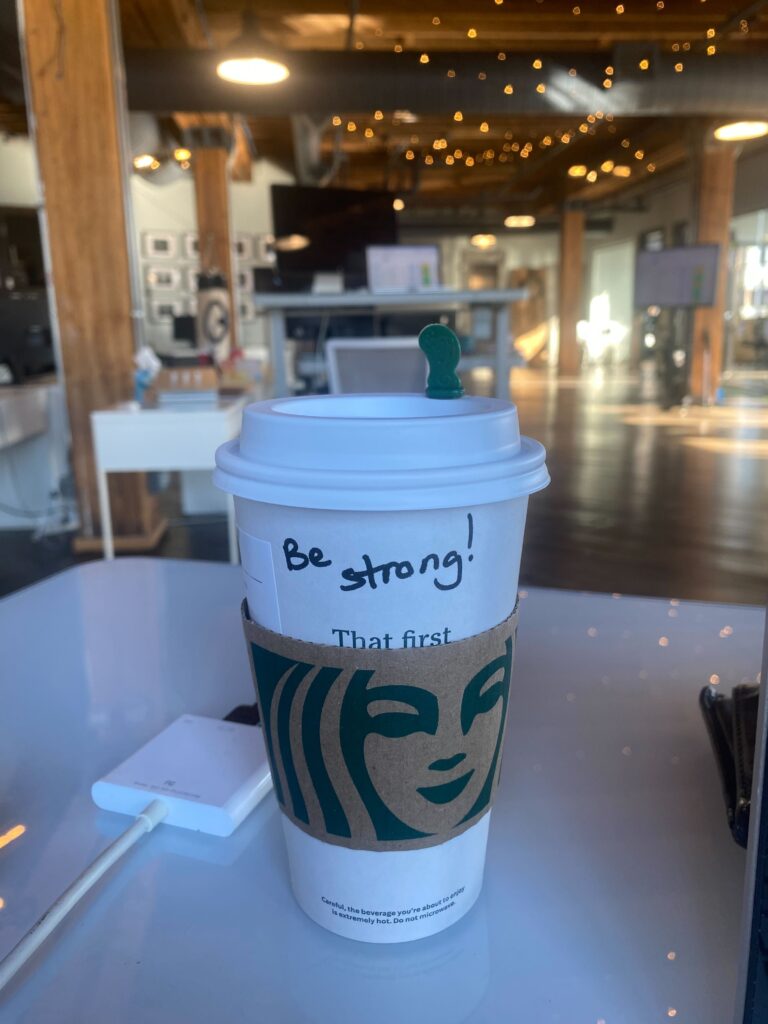The idea for this blog’s topic was not a complex one. When in doubt, write about coffee. At Fortress, we are a team of dedicated coffee drinkers, so it’s only appropriate that we comment on Starbucks’ recent changes and the early returns they’ve produced.
In an era of ever-decreasing human interaction between brand and consumer, their renewed focus on community, quality, and a more personalized in-store experience has been cool to see.
Here’s our in-depth look at Starbucks’ rebrand, what’s changed, and why it matters to us (and you).
Leadership and Strategic Vision
In August 2024, Starbucks made a bold move by appointing Brian Niccol as CEO and Chairman. Niccol, best known for his success at Chipotle, has a clear vision: return Starbucks to its roots and reaffirm its identity as a neighborhood coffeehouse. For too long, and possibly due to the pandemic’s impact, visiting a Starbucks has become such a robotic, transactional experience from the start to finish. A Starbucks in Miami is the same experience as a Starbucks in Chicago. And probably, Jakarta, Indonesia and Belgrade, Serbia, too. And as we’ll discuss, this can happen when massive companies lose sight of what got them to their status in the first place: connections. Niccol’s approach emphasizes not only great coffee but also a welcoming, community-centric environment. Business Insider’s pulse check on his “Back to Starbucks” plan shows that these changes are already starting to take shape.
Enhancing the In-Store Experience
One of the most noticeable changes is in the very heart of Starbucks: the stores themselves. The rebrand is all about reconnecting with the customer, and this starts with the in-store experience. Some stores have been redesigned, physical in-store menus have been scaled down to become easier to digest, and other architectural designs are in the works to let Starbucks be an ideal “third space” for the world. Also known as, a place for people to just exist, outside of their home or their jobs. It’ll be interesting to see how that progresses, because many communities across the country don’t have a ton of local coffee shop options, so Starbucks NEEDS to be welcoming, and a place those people want to spend their time and money.
A Return to Personal Touch
Gone are the days of impersonal, printed cups. Now, Starbucks is bringing back the charm of handwritten names and messages on cups.
Have you experienced this firsthand yet? How did it make you feel?
This simple gesture goes a long way in making each customer feel recognized and valued. It’s a nod to the personal connection that originally made Starbucks a beloved gathering spot for coffee lovers.
Additionally, the reintroduction of ceramic mugs and self-serve bars for creamer and simple syrup, aims to create a cozier, more authentic coffeehouse vibe.
Here’s one we got just this week. Nice little boost on a Monday.
Streamlining Operations and the Menu
A significant part of the rebranding effort focuses on operational efficiency. Starbucks is simplifying its menu by reducing the number of offerings by around 30%. This isn’t just about cutting down options; it’s about doubling down on what works best and ensuring that every cup served is of the highest quality.
Most people know what they want before they come in anyway, so it makes a lot of sense to scale back the less-frequently ordered options.
Faster, Smoother Service
The company is also overhauling its mobile ordering system. The new system is designed to reduce wait times dramatically – aiming for an average of just four minutes per order. This is a clear response to customer feedback and operational challenges noted in previous reviews.
An Axios report on Starbucks’ Spring menu even highlighted the removal of 13 drinks, a move that aligns with the overall strategy of operational efficiency and quality control (Axios). Fewer choices may initially seem limiting, but they ensure that what’s on offer meets the high standards Starbucks is known for.
Global Market Focus and Challenges
While many of the changes are being implemented in the U.S., Starbucks’ rebranding efforts also have a global dimension. In markets like China, where Starbucks has experienced fierce competition and evolving customer preferences, the company is exploring strategic partnerships and localized approaches to recapture market share. Although specifics are still emerging, the effort to tailor the coffeehouse experience to local tastes underscores the adaptability of Starbucks’ strategy.
These strategies remind us that even a giant like Starbucks must constantly evolve to meet the needs of diverse customers around the world.
Fortress’ Take on the Rebrand
Every coffee run has turned into a mini case study in how even the most established brands can reinvent themselves. We appreciate Starbucks’ willingness to listen to customer feedback and make tangible changes that enhance both the product and the overall experience.
For us, we see the rebrand as a success, showing that sometimes a rebrand can be a reaffirmation of core values that were stated, but not always followed.
Conclusion
Starbucks’ rebranding under Brian Niccol has people, marketers and non-marketers alike, talking about Starbucks in a new way. A more positive one. And that’s what it’s all about.


